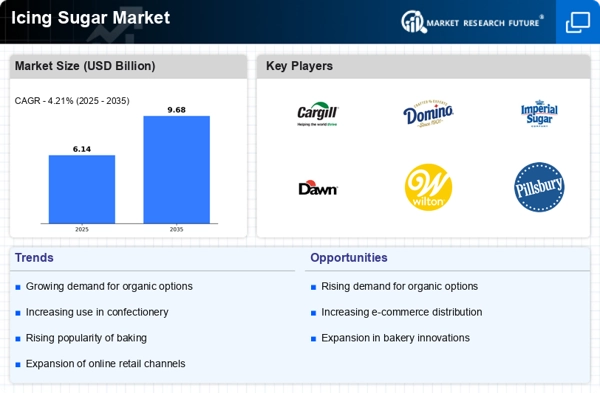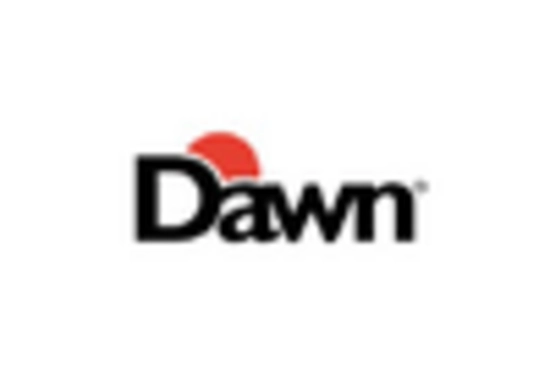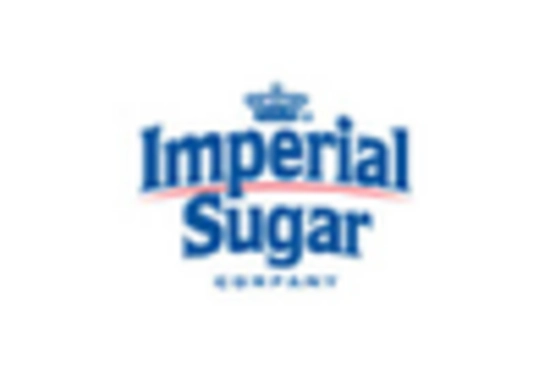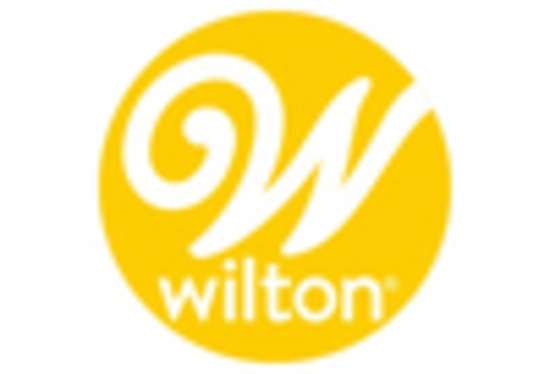Growth of the Baking Industry
The Icing Sugar Market is significantly influenced by the growth of the baking industry, which has seen a resurgence in recent years. With an increasing number of consumers engaging in home baking, the demand for icing sugar has correspondingly risen. Data indicates that the baking industry is projected to grow at a rate of 5% annually, driven by the popularity of baking shows and social media platforms showcasing baking recipes. This trend has led to a heightened interest in decorative baking, where icing sugar plays a pivotal role in creating visually appealing desserts. As more individuals experiment with baking at home, the icing sugar market is likely to benefit from this growing consumer engagement and enthusiasm.
Innovations in Product Offerings
Innovations within the Icing Sugar Market are playing a crucial role in attracting a diverse consumer base. Manufacturers are increasingly introducing flavored and organic icing sugars, catering to the evolving tastes and preferences of consumers. For instance, the introduction of natural colorings and flavors in icing sugar products has gained traction, appealing to health-conscious consumers. Market data suggests that the organic icing sugar segment is expected to witness a growth rate of around 6% annually, reflecting a shift towards cleaner and more sustainable ingredients. This trend not only enhances the product offerings but also aligns with the broader movement towards healthier eating habits, thereby expanding the market reach and potential customer base.
Expansion of E-commerce Platforms
The Icing Sugar Market is witnessing a transformation due to the expansion of e-commerce platforms. As consumers increasingly turn to online shopping for convenience, the availability of icing sugar through various e-commerce channels has surged. This shift is particularly evident in the rise of specialty food websites and online grocery stores, which offer a wide range of icing sugar products. Market analysis indicates that online sales of baking ingredients, including icing sugar, are expected to grow by approximately 7% annually. This trend not only enhances accessibility for consumers but also allows manufacturers to reach a broader audience, thereby driving sales and market growth. The convenience of online shopping is likely to continue influencing consumer purchasing behavior in the icing sugar market.
Rising Demand for Confectionery Products
The Icing Sugar Market is experiencing a notable increase in demand for confectionery products, driven by changing consumer preferences. As more individuals seek indulgent treats, the need for icing sugar, a key ingredient in cakes, pastries, and desserts, has surged. According to recent data, the confectionery sector is projected to grow at a compound annual growth rate of approximately 4.5% over the next five years. This growth is likely to be fueled by the rising popularity of home baking and the expansion of the bakery sector, which is expected to further bolster the icing sugar market. The increasing number of specialty bakeries and artisanal confectioners also contributes to this trend, as they often utilize high-quality icing sugar to enhance the visual appeal and taste of their products.
Increased Focus on Aesthetics in Food Presentation
The Icing Sugar Market is significantly impacted by the increasing focus on aesthetics in food presentation. As consumers become more visually oriented, the demand for beautifully decorated desserts has surged. Icing sugar is a fundamental component in achieving the desired aesthetic appeal, making it a staple in both home and professional baking. Recent trends indicate that consumers are willing to invest in high-quality ingredients to enhance the visual and taste aspects of their baked goods. This shift towards aesthetic-driven consumption is likely to propel the icing sugar market, as bakers and confectioners seek to create visually stunning products that attract consumers. The emphasis on presentation is expected to continue shaping the market dynamics in the coming years.

















Leave a Comment